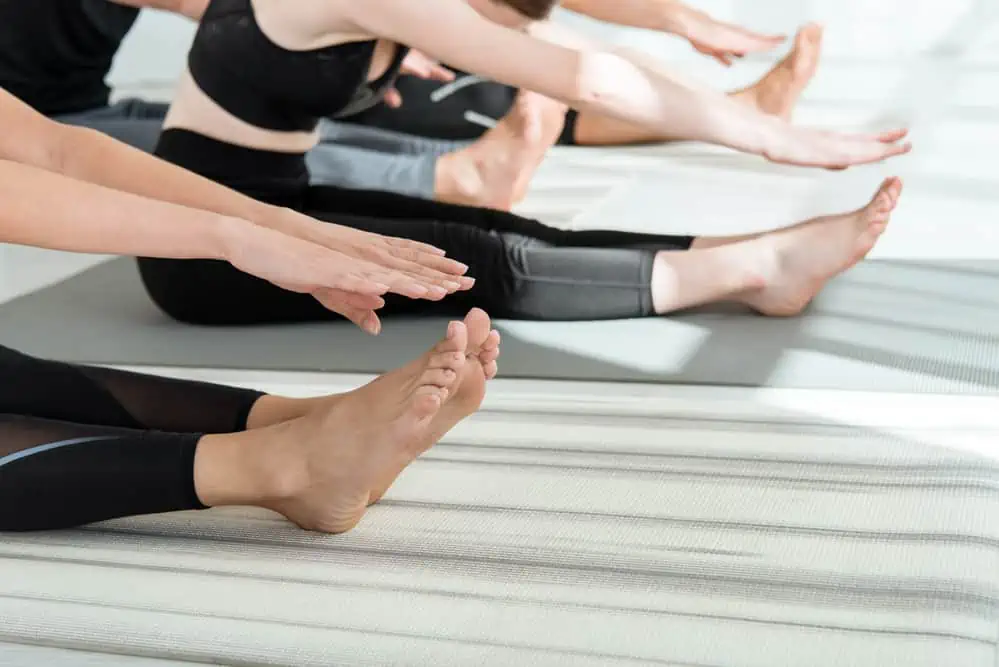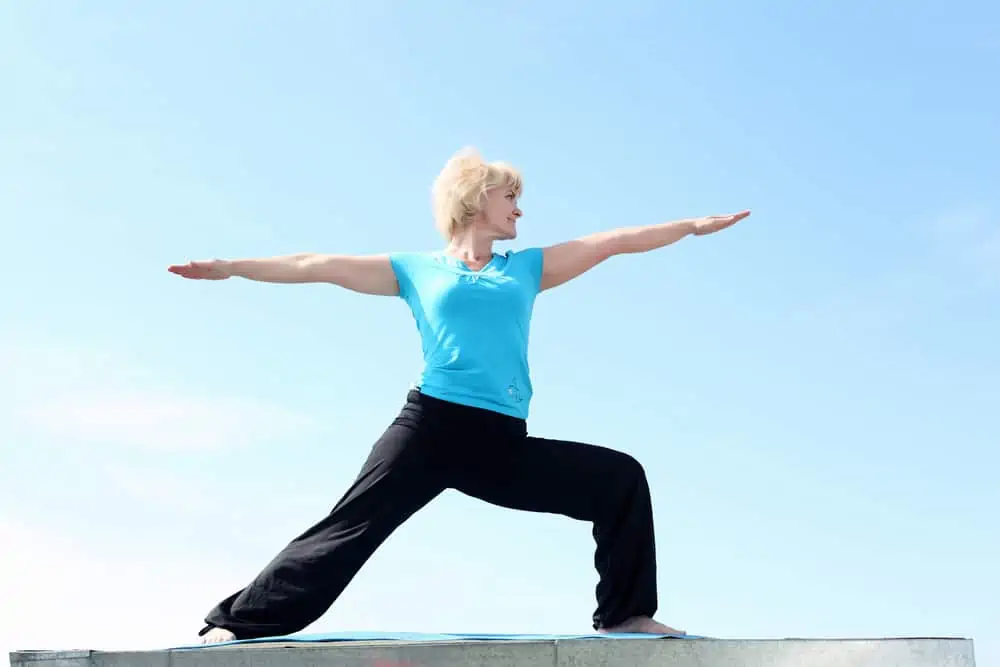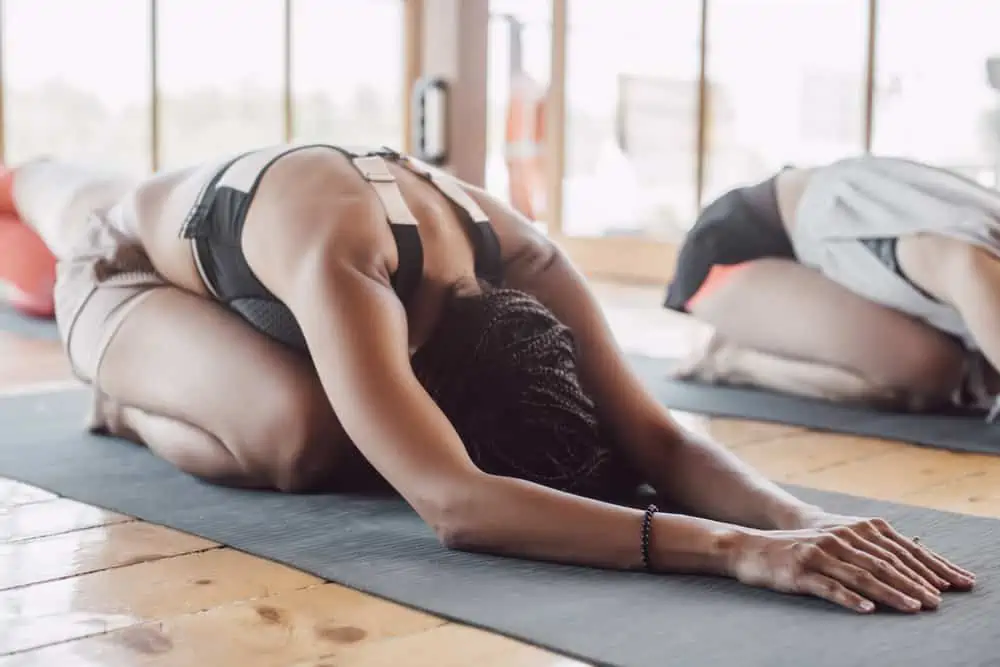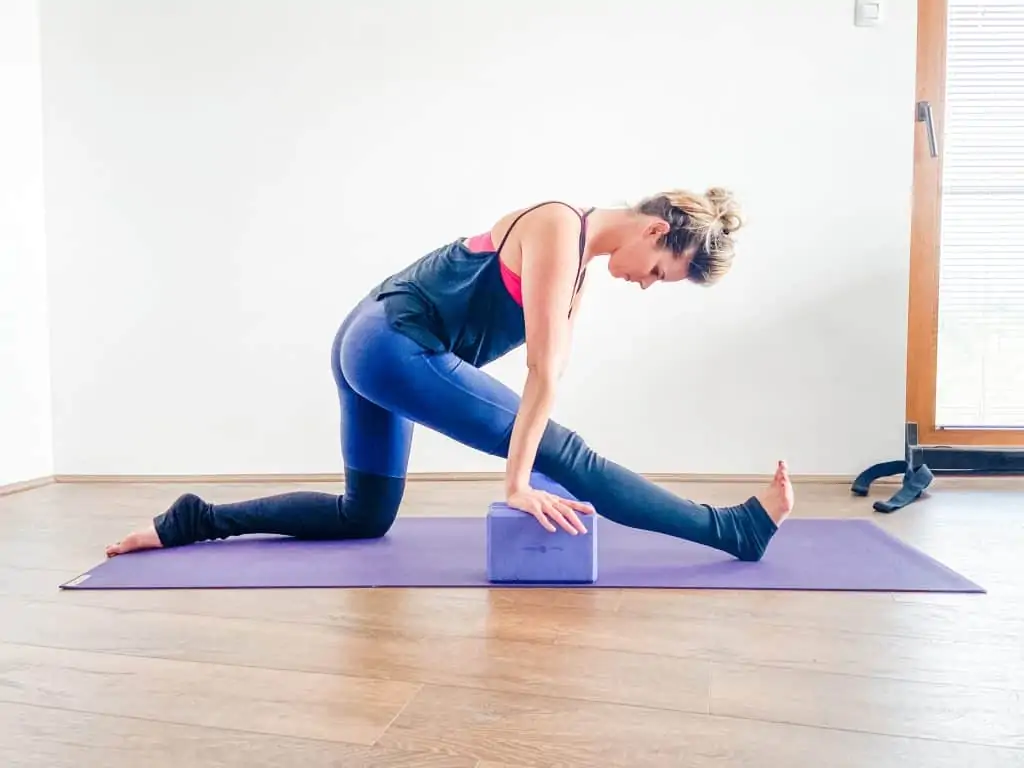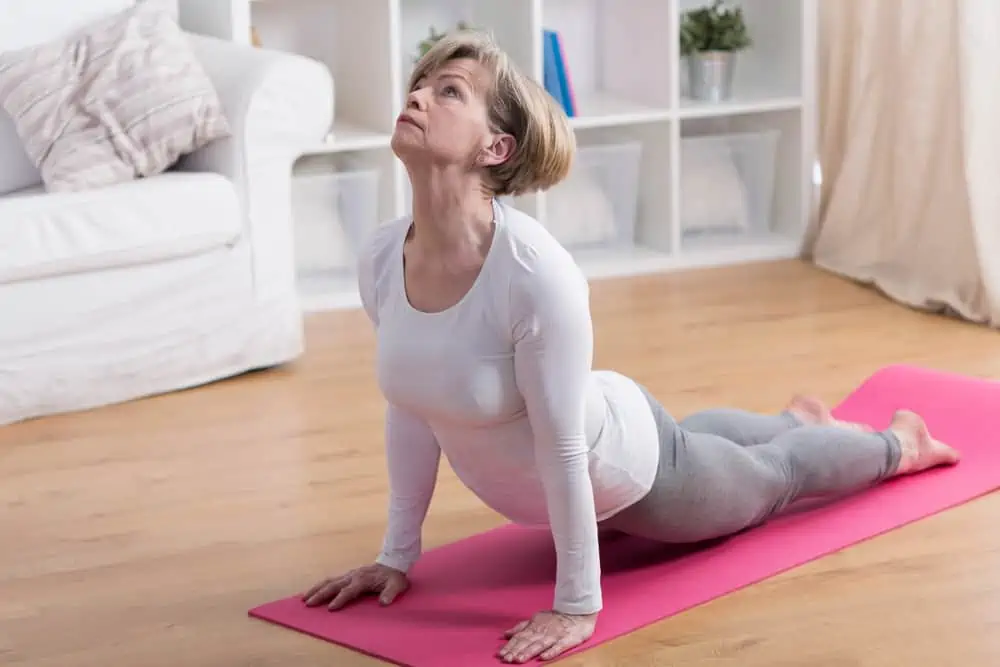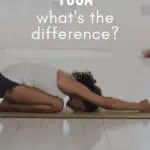This post may contain affiliate links. If you click through a link and make a purchase, I may receive a commission at no additional cost to you. As an Amazon Associate, I earn from qualifying purchases. Read the full disclosure here.
Stretching and yoga have overlapping components, but the two practices are very different, with different intents and goals.
It’s like comparing apples to oranges. They’re both fruit, but have different roles within a fitness or wellness routine.
In this article, we’ll compare stretching vs. yoga to bring you the key differences and help decide which practice is best for your goals.
Disclaimer: This content is for educational purposes and is not medical advice. Read the full disclaimer.
What is stretching?
Stretching is performing intentional movements with various hold times with the goal of improving flexibility and range of motion.
There are many different types of stretching, but when someone says “stretching,” most are referring to static stretching, in which a range of motion is held for approximately twenty seconds to one minute.
During stretching, you may feel a perception of tightness, followed by a perception of improved flexibility, decreased muscle tension, or improved range of motion or mobility.
Stretching exercises are typically performed for 5-10 minutes at the end of a workout as part of a cool-down, although one might spend a longer time stretching if they find it beneficial or enjoy the practice.
Some people choose to stretch at the beginning of a workout. However, there is some evidence that performing static stretching before an activity can increase the risk of injuries, especially for activities that involve quick, explosive movements.
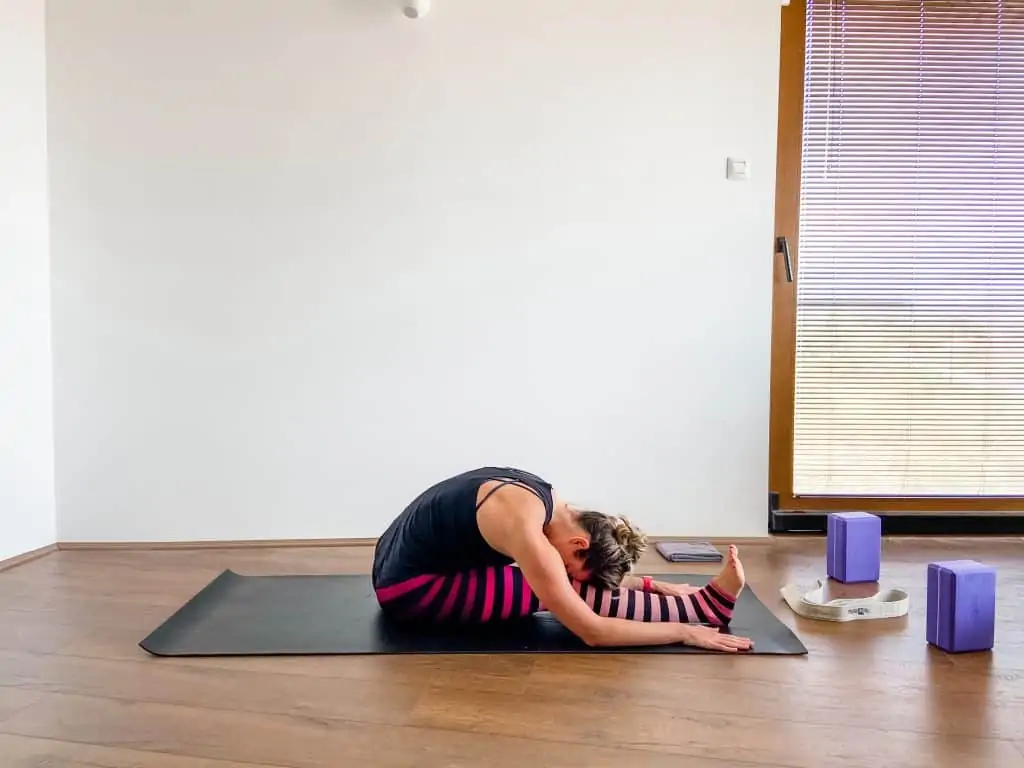
Flexibility is determined by the overall tone of the nervous system. This is a large part of why you can’t “force” yourself into becoming more flexible.
Receptors in the tendons (Golgi tendon organs) communicate with the brain and spinal cord to send the correct information back to the muscle. These receptors are also there to protect you and resist rapid changes in muscle length.
For example, if you move too quickly or too far into a range of motion (ROM), the receptors may interpret this as dangerous and do not allow the movement as a protective response. Forcing a stretch is counterproductive and can even lead to an injury.
If you always feel tight despite lots of stretching, there’s probably another piece of the puzzle that needs to be addressed.
Individual genetics also play a part in how flexible you are. Everyone can make some progress with a consistent program, but not everyone will achieve the same level of flexibility.
Related read: Visit the exercise library to learn step-by-step stretches for various muscle groups.
Static vs dynamic stretching
Static stretching or passive stretching involves moving into a stretch position and holding that position for anywhere between twenty seconds and one minute.
Static stretching can be an effective way to increase flexibility and is best used at the end of physical activity.
Dynamic stretching or active stretching involves moving your body through functional, activity-specific motions, for example, walking lunges, leg swings, torso twists, etc.
This type of stretching is best performed after 5-10 min of low-intensity aerobic activity as part of a warm-up and can help reduce injury by preparing the body for activity-specific movements.
Related read: How To Avoid Overstretching Your Muscles
Benefits of stretching
Here are some common reasons why someone might begin a stretching routine.
- Improved flexibility
- Improved joint range of motion
- Improved mobility
- Decrease perceptions of pain, tightness, or muscle tension
- Relaxation, decrease stress levels
People may also aim to incorporate isolated stretching exercises throughout the day to tackle a problem area or manage discomfort.

How is stretching different from yoga?
Many have the perception that yoga is “just stretching,” but this is far from the truth. Parts of a yoga practice involve stretching, but stretching is not all that encompasses yoga. As a yoga teacher, I’m always ready to share the positive physical and mental benefits that the practice has to offer.
Yoga is a mind-body practice that incorporates postures called poses (asanas) with breathing techniques (pranayama) and focused intention.
There are many different styles of yoga which range from meditative practices that require no physical exertion to intense physical practices that incorporate a high level of strength, balance, and flexibility.
Yin yoga, for example, holds positions for 2-5 minutes to increase deep stretching sensations in various areas. Whereas vinyasa yoga flows poses together with breathing for a more intense and dynamic practice.
While stretching doesn’t follow a particular flow, a yoga practice typically moves through a similar format of centering and breathwork, progressive movement, and cooling down to savasana, the final resting pose.
In Western culture, yoga tends to be viewed as more of a workout, and many people seek out this movement practice as a part of their fitness routine.
It’s important to acknowledge that yoga is more than just a trendy workout and has deep roots that tap into physical, mental, and spiritual well-being.
While stretching is typically performed for just a few minutes, yoga is often performed for longer periods of time, with yoga classes typically ranging from 45-90 minutes.
Of course, there are shorter yoga sessions as well, and there’s no rule as to how long your yoga practice needs to be. Often, it takes at least a few minutes to center yourself and get into your practice.
Stretches are typically named after the muscle group they target. Yoga pose names come from traditional Sanskrit and commonly relate to a particular shape or animal that the pose resembles with a historical significance.
While many yoga poses target flexibility to a particular area, the name of the pose isn’t necessarily as obvious as the nomenclature of stretches and may require more familiarity with the practice to know which yoga poses target which areas.
How are yoga and stretching similar?
Some yoga poses and practices involve holding static positions, while others involve dynamic flows between postures, breathing practices, strength, and balance elements.
In fact, many common yoga poses are the same positions as common stretches, just with a different name. For example, seated forward fold, is the same position as a seated hamstring stretch.
Both yoga and stretching may utilize props such as straps or blocks to assist with providing modifications and leverage to make positions more comfortable or to adjust for your available range of motion.
Props are not only useful for modifying a range of motion, but they can also assist with making stretches more challenging.
Breathing is still an important component of stretching, although is talked about less than in yoga. Prioritizing slow, deep breathing during stretching can help to relax the nervous system and make stretching more productive.
Both stretching and yoga can be done at home or in a studio or gym setting.
Benefits of yoga
Here are some reasons why someone may gravitate towards a yoga practice as part of their overall wellness program.
- Boost physical and mental well-being
- Improve strength
- Improve balance
- Improve flexibility
- Improve body awareness and regulation of the breath
- Decrease pain, manage pain
- Relaxation
Is it better to stretch or do yoga?
Both have their pros, it depends on what your goals are.
If you’re short on time and your only goal is to improve flexibility and range of motion, stretching might be for you.
If you’re interested in a mind-body movement practice and focused intention on breathing and movement, you may want to try a yoga class.
Check out my YouTube channel for yoga and movement classes at home!

